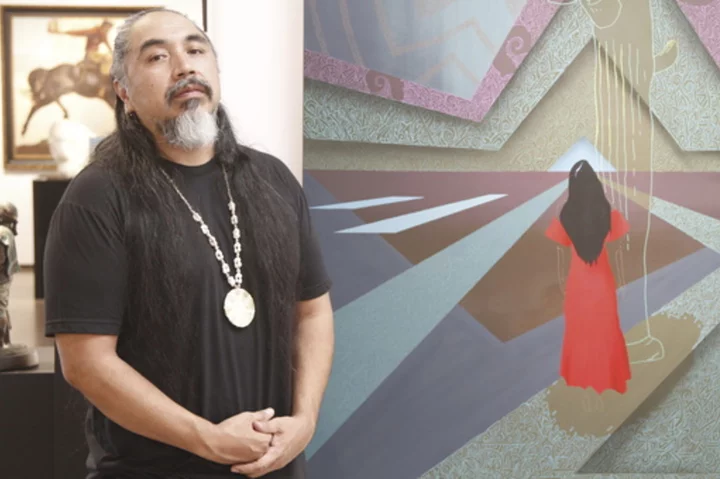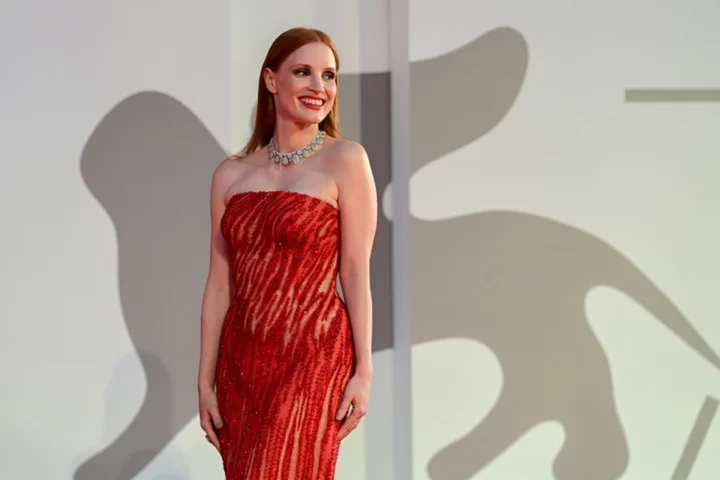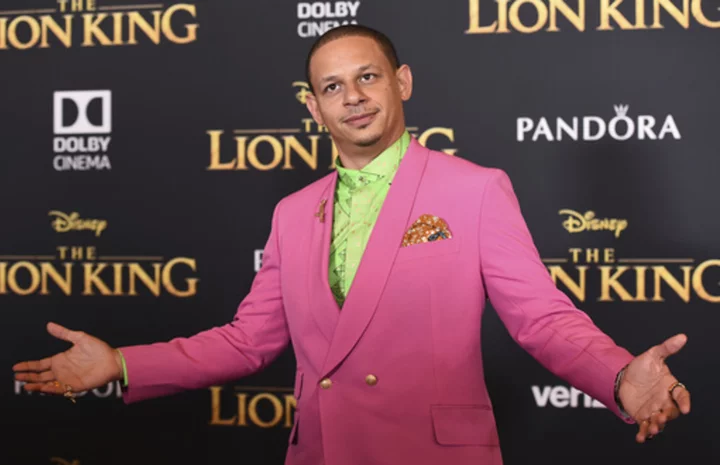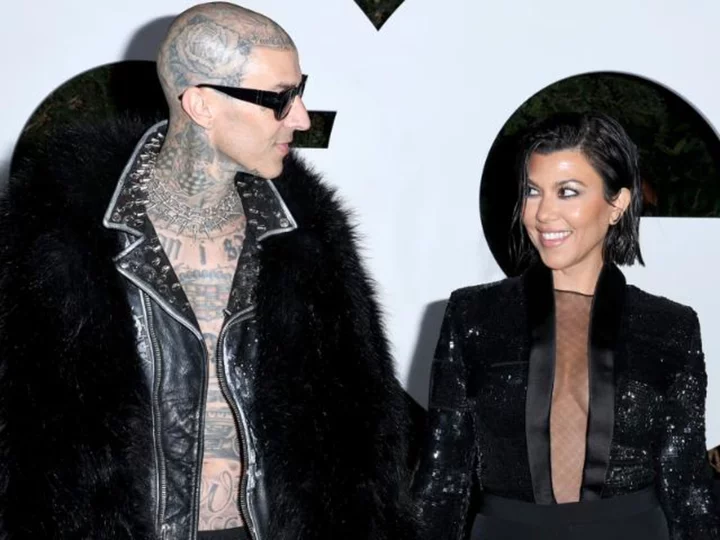PHOENIX (AP) — If things had gone as originally planned, Mesa Contemporary Arts Museum would be launching its fall exhibition Friday. But officials postponed the show six weeks before the opening over concern that a painting by activist-artist Shepard Fairey could be seen as “disparaging toward some City of Mesa employees.”
Now, the Phoenix suburb is ready to move forward and debut the show in October, albeit with a prominent disclaimer that the artwork represents only the artist's views. All the original artists have been invited to remain in the exhibition.
Thomas “Breeze” Marcus will not be one of them. And he says he won't be displaying any of his work, which focuses on Native American life, in Mesa in the future.
The whole ordeal, in his view, is rooted in censorship.
“I’m happy to walk away from that situation,” said Marcus, who sent some of the paintings intended for the show to other venues after the postponement. “I think artists working with institutions in general should be very cautious and wary of how they move forward. Artists are the ones that ultimately should hold the power because there wouldn’t be institutions or museums or galleries without the artists."
Collaboration between the art world and government often breeds conflict. Artists expect autonomy over what they display, even in public spaces. Municipalities want to support art in their communities without offending the viewers.
In recent months, however, the cycle of outcry, removal and reflection seems to be repeating itself more frequently. Proponents of artistic freedom say the current political climate has made more topics than ever controversial and emboldened more people to voice their complaints. Cities caught in the crossfire between artists and the public are forced to reexamine how they choose art.
Fairey is widely known for his Barack Obama “HOPE” poster. His painting that led to the suspension of the Mesa art exhibit, titled “My Florist is a Dick,” is seen by some as anti-police. It depicts a police officer in riot gear holding a baton with a flower growing out of it. The phrase ‘when his day starts your days end’ appears at the top right of the painting.
The Associated Press left email and phone messages seeking comment with representatives for Fairey.
The uproar has prompted the city of Mesa to stop and reflect.
“Mesa’s intent is to emerge stronger out of this postponement, and we need to take our time to ensure we are putting the right processes in place,” the city said in a statement.
The San Francisco suburb of San Mateo is going through the same predicament.
Artist Diego Marcial Rios was chosen to show 20 paintings in a gallery inside San Mateo City Hall this summer. He installed the collection, titled “Out of Covid and into the Fire," on July 18. The next day, a city official said there were complaints involving two of the 10x10 inch (25x25 centimeter) paintings, both of which portrayed a police officer figure as racist and prone to brutality. Rios offered to swap them out.
“I said, ‘No problem,’" Rios told The Associated Press. “I'm pretty reasonable. I said, ‘OK, I’ll switch them out."
According to the city of San Mateo, neither city staff nor the committee that oversees art displays had a chance to see a lot of the paintings beforehand, including several works “with a variety of strong political connotations.” Members of the public and city employees across departments expressed concerns after the exhibition was erected.
“We attempted to contact Mr. Rios the day after the artwork was hung, but ultimately this experience provided us an opportunity to reflect and we decided to temporarily suspend the program in order to make improvements,” the city said in a statement Thursday.
The city also took down art in a library gallery while officials consider how to revamp their Public Art Exhibit program “to refine the submission and selection criteria for potential artists, and (define) a more direct oversight process.”
Rios slammed the decision.
“All they told the general public was, ‘We’re gonna be more and more restrictive about the artists we show,’ which is insulting when you think about it," he said.
Elizabeth Larison, of the National Coalition Against Censorship, said clashes over art in municipal spaces are actually quite common. Curators, museum directors and even artists wrestle with the pros and cons of displaying artwork that is likely to provoke negative reaction.
“What we see in arts and cultural advocacy programs is a lot of discomfort around artworks that either criticize past or current government agencies or policies," Larison said. "That even extends to works that address historical travesties that may have been commonplace.”
After George Floyd's killing in 2020, there was a rush to support people of color and inclusion, including through public art. Now, artwork that aligns with those views seems to bring out just as many critics. Some pieces have been taken down for mentioning words such as “diversity” or “equality,” according to Larison.
“People are really afraid to bring up certain issues,” she said.
Sarah Conley Odenkirk, a Los Angeles attorney who specializes in art law, has consulted for both artists and local governments. She noted that typically, governments can only impose “content-neutral” restrictions on artwork, such as the time, place and manner in which it is displayed — not its subject matter. Banning certain topics wouldn't hold up in court, she said.
"It’s a pretty high bar,” Odenkirk said. For example, she said, a city might say, “'We can’t have instructions on how to make a bomb displayed because there’s a compelling government interest in not teaching people how to make bombs.'"
It's guaranteed that some artwork is going to make people unhappy, but governments and art venue staffers don't always have the luxury of simply dismissing those critics, Odenkirk said.
“You can’t just tell people, ‘You’re an idiot,'” she said. “Maybe it’s something that somebody overlooked and didn’t think through very well. And so sometimes it’s a legitimate complaint.”
Larison, of the Coalition Against Censorship, advises any institution to have a plan in place not just for selecting artwork but for managing the reaction to it, through public relations strategies such as community panels. The goal is to have some kind of dialogue.
“It's a far greater loss to not ever have the opportunity to discuss difficult things in a public forum,” Larison said.
Dan Rich, a former city manager for the San Francisco Bay Area city of Mountain View, agrees.
“It's helpful to have a clear policy with good definitions and objective standards,” he said.
Marcus, the Phoenix artist, will judge on a case-by-case basis whether he will show in another municipal-owned venue. He will also likely ask for a written promise of “zero interference” in the content of his work.
Artists need to “maintain their own value, but to also really just protect themselves,” Marcus said. “Hopefully, this changes a lot. And I hope other museums, institutions, whoever they're controlled by take note.”









